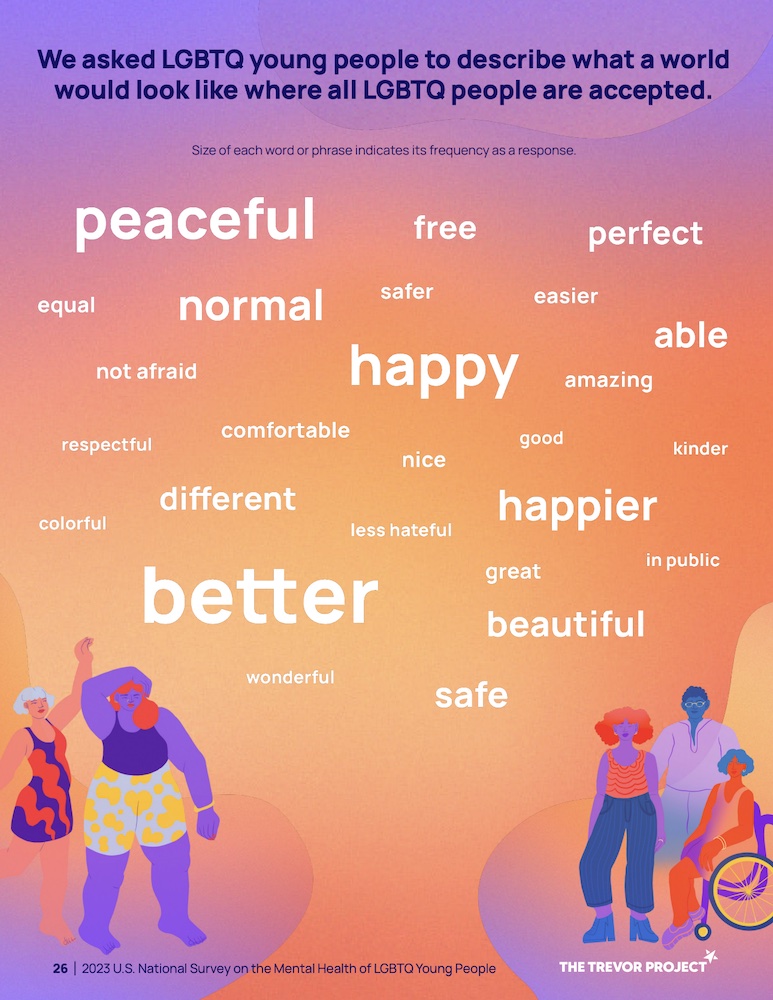Advocates for LGBTQ youth asked them to do something new on an annual survey this year: Describe a world where all LGBTQ people are accepted. Their responses showed that “despite the prevalence of unique challenges, barriers to care, and relentless political attacks, LGBTQ young people remain hopeful and resilient,” The Trevor Project, a suicide-prevention nonprofit, said in its 2023 U.S. National Survey on the Mental Health of LGBTQ Young People.
Still, that political climate—in which books with LGBTQ characters have been yanked from school libraries and the rights of transgender students are being restricted by state governors and lawmakers—is clearly taking a substantial toll on the mental health and well-being of LGBTQ youth. The Trevor Project’s survey found:
- A majority of LGBTQ young people reported being verbally harassed at school because people thought they were LGBTQ.
- Nearly 1 in 3 LGBTQ young people said their mental health was poor most of the time or always due to anti-LGBTQ policies and legislation.
- Nearly 2 in 3 LGBTQ young people said that hearing about potential state or local laws banning people from discussing LGBTQ people at school made their mental health a lot worse.
Equally concerning is that more than half (56%) of LGBTQ students who wanted mental health care in the past year were not able to get help while less than four in 10 said their home was LGBTQ-affirming. On the more hopeful side, about half of transgender and nonbinary young people reported that their school was gender-affirming and, therefore, were less likely to attempt suicide.
The risk of self-harm also declined among transgender and nonbinary young people who reported that all of the people they live with respected their preferred pronouns.
Building support for LGBTQ youth
The students’ responses should give superintendents and other administrators ideas for further expanding the support they provide to their LGBTQ youth. LGBTQ youth who experience affirmation at home, at school, at community events and online report lower rates of attempting suicide. They also said it would be helpful for parents, educators and other people in their lives to know more about gender identity, pronouns, creating safe spaces and microaggressions, among other topics.
More from DA: Nearly 25% of high school students now identify as LGBTQ. Here’s why that matters
And despite concerns about screen time and social, LGBTQ youth said they found the most affirming spaces online. Schools offered the second-most affirming spaces, with homes and communities ranking much farther behind. For example, transgender and nonbinary young people were less likely to attempt suicide if they had access to a gender-neutral bathroom at school. About two-thirds of these students confirmed that they had access to a gender-neutral bathroom.
Finally, educators can also learn from students’ descriptions of a world where all LGBTQ people are accepted. Some of the most common phrases that students used included “can be who they want to be,” “people mind their own business,” “gender-neutral bathrooms,” and “people ask pronouns.”











